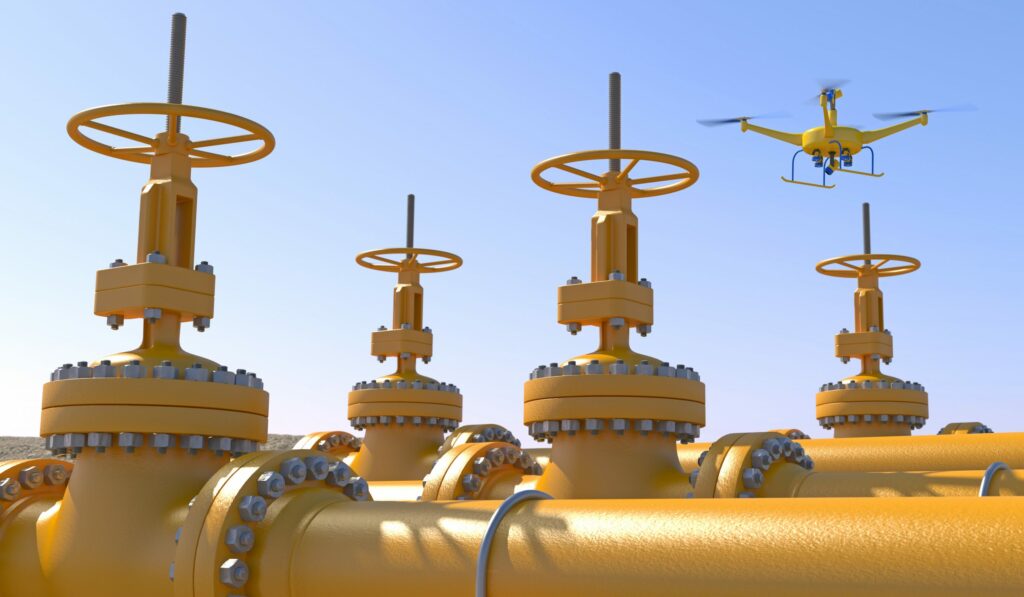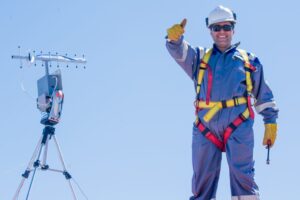In the first part of this article, I concentrated on possible use cases of drones for the Upstream Oil & Gas industry and explain how the Challenge of being disruptive and successful works.
Disruptive and positive. How does it work?
However, the management of these drone services (internal or subcontracted) for such diverse uses, disregarding the continuous use to attend sporadic or spot-type events, is complex to perform. Some uses are linked to CAPEX and others to OPEX, and the competition between the different needs, so that they all add value, is one of the challenges that must be overcome when building business cases. Probably having equipment dedicated by areas or sets of tasks of similar nature could be part of the solution to this complex dilemma that the creation of a new context from this disruptive technology brings us. For such diverse uses, flight and information processing strategies and tactics must be performed to minimize the use of the equipment and maximize the use of the results obtained. The selection of drone technology according to the characteristics, dimensions, the quantity of installations and of course the “budget” is another key point. There are many and diverse technologies, dimensions, deployment complexities, operational difficulties, autonomy, load capacity, adaptability to the terrain and climate of the zone. Selecting the right equipment, with the right technology and budget, is not an easy task. Again, it is another of the most difficult variables to tune in to when building a business case, where the known contexts are completely broken.
Building a business case, even after several small, extended and long-lasting pilot tests is not easy.
Still many obstacles to sort
Many other obstacles must be overcome in order to achieve a successful operation and one that promises an adequate return in value. But there are more obstacles to be overcome. The key considerations to take into account are:
- With current technology, good aeronautical knowledge is necessary
- to have the provision of qualified and certified personnel
- good quality and environmental management must be realized (consumables management)
- have an on-site security plan (contingency plan)
- have aeronautical safety studies
- an aeronautical safety plan.
- integration with the existing airspace and the management and maintenance of the permits before the competent entity in each place or country.
- It will also require ground support vehicles
- good management of all the drones that are part of the system, with specialized maintenance technicians.
- operation manuals (writing and revision)
- maintenance procedures
- operating procedures
- procedures for the confidentiality of information
- specific operational instructions like aircraft characterization manual etc.
- correct management and supervision of operations
- flight crew management
- weather management
- communications management
- procedures for online analysis and post-processing analysis (information deliverable and workflow) are important to obtain successful results in any of the uses.
The learning curve in these implementations is slow, and the technology moves quickly. To transit the learning curve in the fastest and most efficient way, strong leadership from the top of the organization is required. The leadership team should be able to align all the transverse areas and the diverse businesses involved under a common development and a fast implementation objective. That avoids duplicity of effort and clustering of information. Under these premises, organizations will be able to quickly visualize the most adequate business models and at the same time, they detect new businesses.
The greatest challenge is the disruption that this produces. As we have learned in many other cases, the technologies and advances that come to disrupt should not be studied and applied by those involved in the current processes themselves, but by completely different teams.
Great benefits
As the scenario shows, it is not easy. However, the added value that this can give in upstream operations, over and above a standard operation or complementing the standard operation, promises to bring many additional benefits:
- It produces a dissuasive effect equal to or better than what we are used to with closed-circuit TV systems
- increased speed of deployment and response to events
- enhances operational flexibility
- allows easy access to hard to reach areas
- allows performing night or specific missions (fires, vandalism, etc.) with low risk
- fewer vehicles on the road
- continuous registration in video and photography
- reduction of environmental pollution
- less risk in operations
- less noise pollution, given the low acoustic footprint they cause
- complements to the telemetry of installations
- contributes to downtime reduction (early detection of shutdown and cause), etc.
However, it not a bed of roses
The challenges mentioned above can be solved, as in any complex project or implementation. However, there are still challenges towards scalability, which still do not have a definitive answer, especially in cases of continuous use. For example, a video operator cannot be all the time looking at the screen and analyzing the information, here the video analytics have to play an important role in the future. Today, analytical video works perfectly in cameras that are static, but it still does not work as perfectly as a person does when the camera is continuously moving and looking for various objectives and for various uses, including new uses that the camera operator himself is discovering. A complete analysis of the video, or of all the information that the sensors of a drone can give, would allow perfect integration with the systems SCADA, production accounting, ERP and others. Lands where the use of the science of data, artificial intelligence, etc. would have a place. So, the advance in video analytics is one of the great challenges. Probably edge computing is mobile, and part of all this intelligence must be “in the air”.
The other big challenge is the robustness and autonomy of the current equipment, which does not seem to be ready yet to fly 24 hours and have multiple takeoffs and landings in complex areas, with varied climates and terrain orographies as the oilfields.
Other challenges, or barriers to be overcome, are legal aspects, cyber security, adaptability to different uses, dependence on-ground infrastructure, etc.
As in standard plant automation projects, the level of automation we choose for the system will directly impact the project’s CAPEX, but will strongly reduce the OPEX at a higher level. For example, do I need a pilot or two per drone crew? Or none at all? In most of the current fixed-wing systems, the drone can take off, land and fly alone but the pilot has to be attentive to take control. The drone can execute all the functions as long as there are certain operating conditions. A second pilot is also needed who can operate the cameras or sensors on a permanent basis.
What’s missing for scalability?
Where will technology take us in the coming months to fill these technological and capability gaps we have for scalability? Will the answer lie in smaller, more versatile equipment? Maybe the swarm of multirotor or hybrid systems (multirotor and fixed-wing) even combined with rovers and small mobile balloons?
There are many technical challenges yet to be solved, but the big challenge is the tremendous disruption this technology could produce in an industry, that like so many others has been doing things the same way for decades. Just as Airbnb, Uber, Netflix, and so many other examples disrupted the hotel industry, the transport industry and the way we watch series and movies, which will be what will disrupt the upstream Oil&Gas industry will surely have an answer in the coming years. Upstream operators are not specialists in these technologies since it is not their business, which is why the alliances they can make with the main suppliers, as technology partners, are a good path to transit.
The players that have dominated the drone market are likely to change in the coming years, as has happened with other disruptive technologies. They will not only be players that will dominate the market because their hardware or software is the best to fly a drone, or because they develop the best sensors to mount on a drone, but because they will be “creators of new contexts”.
International and national regulators will play a key role as well. New contexts and aviation safety are on the rise, as has been the case with the changes in habits and culture that have occurred with so many other disruptive technologies. The question is whether we are prepared for so many promising changes simultaneously, where testing times seem to be getting shorter and shorter.





